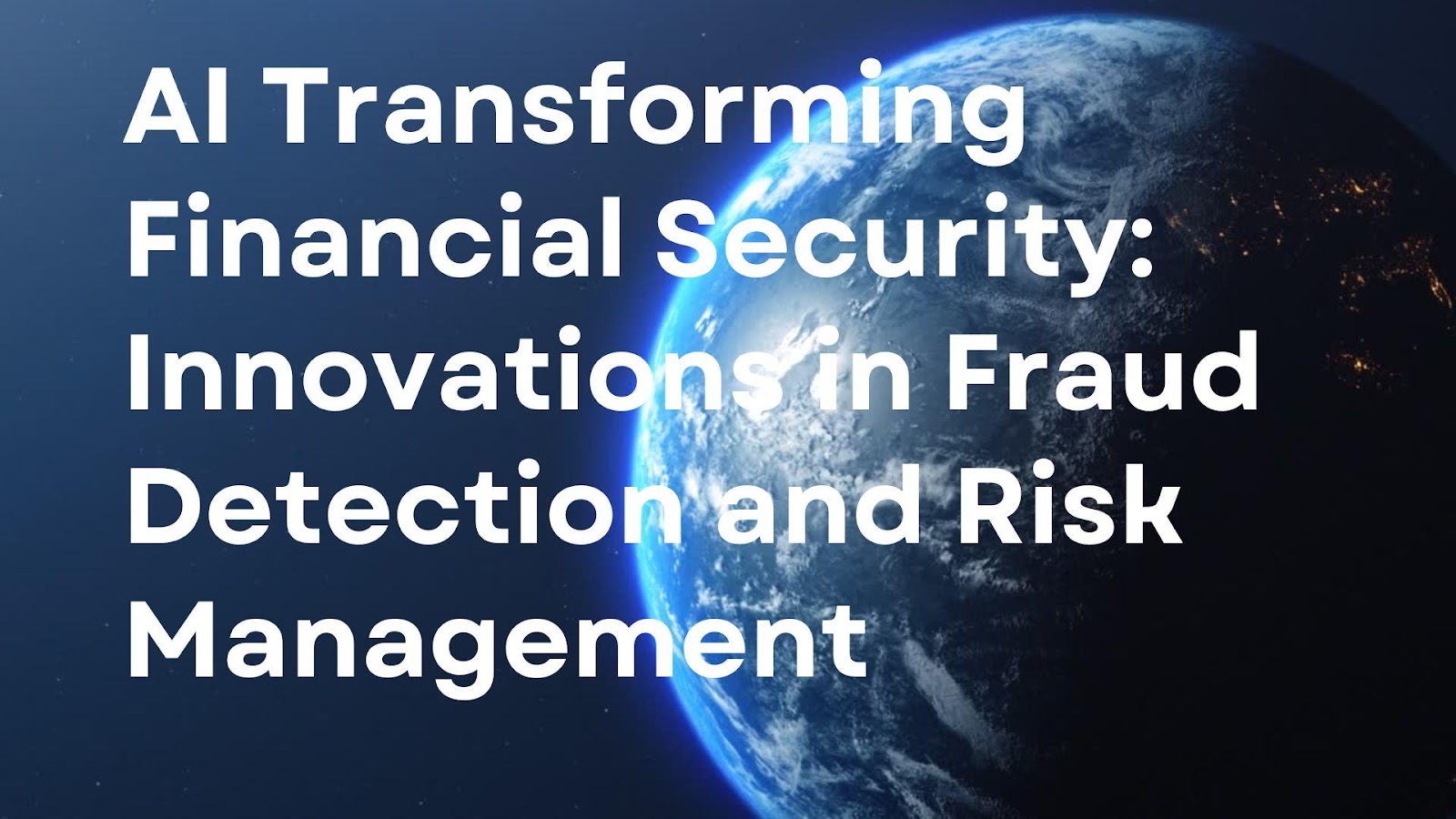The Future of Financial Security with Artificial intelligence (AI) is redefining financial security, streamlining fraud detection, and transforming risk management strategies. In a rapidly evolving digital economy, AI-driven systems offer enhanced efficiency, accuracy, and security. Swapna Reddy Anugu, an expert in AI applications for financial security, delves into these advancements and their implications for the industry.
The Shift from Traditional to AI-Powered Security
For decades, financial institutions relied on rule-based security systems that processed limited transactions and struggled against evolving cyber threats. Early fraud detection mechanisms depended on static patterns, making them ineffective against sophisticated financial crimes. AI has revolutionized this domain, enabling real-time processing of millions of transactions, reducing fraud losses, and improving the accuracy of risk assessments.
Advanced Fraud Detection Systems
Modern fraud detection systems powered by AI leverage deep learning models and neural networks to analyze thousands of data points per transaction. These systems have dramatically improved fraud detection rates, identifying anomalies with up to 98.2% accuracy while minimizing false positives. The introduction of ensemble learning—where multiple AI models work together—has further enhanced precision, allowing financial institutions to detect fraudulent transactions within milliseconds.
Intelligent Risk Assessment Frameworks
AI-driven risk assessment has transformed how financial institutions evaluate creditworthiness and predict loan defaults. Predictive analytics models now process vast datasets, including alternative data points such as social media activity and spending habits, to improve credit scoring accuracy by 35%. Additionally, AI models can identify potential financial risks up to 45 days in advance, enabling proactive decision-making and reducing credit losses by 52%.
These sophisticated AI systems employ ensemble learning techniques that combine multiple algorithm outputs for more robust predictions. Explainable AI frameworks provide transparency into decision factors, addressing regulatory concerns while building customer trust. Real-time monitoring capabilities allow institutions to continuously reassess risk profiles as market conditions evolve. Federated learning approaches enable collaborative model training across institutions without compromising sensitive data. Furthermore, adaptive risk models can account for macroeconomic shifts, automatically adjusting scoring criteria during economic downturns to maintain predictive accuracy while supporting responsible lending practices.
Automating Regulatory Compliance
Regulatory compliance has traditionally been a resource-intensive process for financial institutions. AI-powered compliance solutions now automate the monitoring of thousands of regulatory changes annually, ensuring accurate adherence to evolving financial laws. Adaptive learning models can integrate new regulations within hours, reducing compliance violations by 71% .
Cloud-Based AI Security Solutions
The integration of AI with cloud computing has enhanced financial security by enabling real-time fraud detection and risk analysis. Cloud-based AI solutions ensure seamless scalability, maintaining system availability rates of 99.98% while processing up to 85,000 transactions per second. This integration has also led to a 65% reduction in operational costs related to fraud detection and compliance management. Advanced neural network architectures continuously evolve through automated machine learning pipelines, improving detection accuracy while reducing false positives that previously undermined customer experience and operational efficiency.
The Role of AI in Financial Data Protection
Cybersecurity threats in financial services have escalated, necessitating robust AI-driven security frameworks. AI-based authentication systems now employ multi-factor security protocols, behavioral analytics, and biometric verification to enhance security layers. These systems have successfully reduced identity fraud attempts by 88%, ensuring safer digital banking experiences.
Emerging Technologies Shaping Financial Security
AI’s role in financial security continues to expand with the adoption of cutting-edge technologies:
- Federated Learning: A decentralized approach to AI training that improves fraud detection accuracy while preserving data privacy.
- Quantum-Resistant Cryptography: Advanced encryption techniques designed to protect financial data from future quantum computing threats.
- Edge Computing: Reducing processing latency in fraud detection by analyzing transactions closer to the data source.
- Explainable AI: Enhancing transparency in AI-driven financial decisions, ensuring regulatory compliance and improving customer trust.
In conclusion,the financial sector is on the brink of an AI-driven security revolution. As these innovations continue to evolve, financial institutions must balance technological advancements with ethical and regulatory considerations. With AI at the forefront, the future of financial security promises greater efficiency, accuracy, and resilience against emerging threats. Swapna Reddy Anugu’s insights underscore the transformative impact of AI, paving the way for a more secure financial landscape.



































